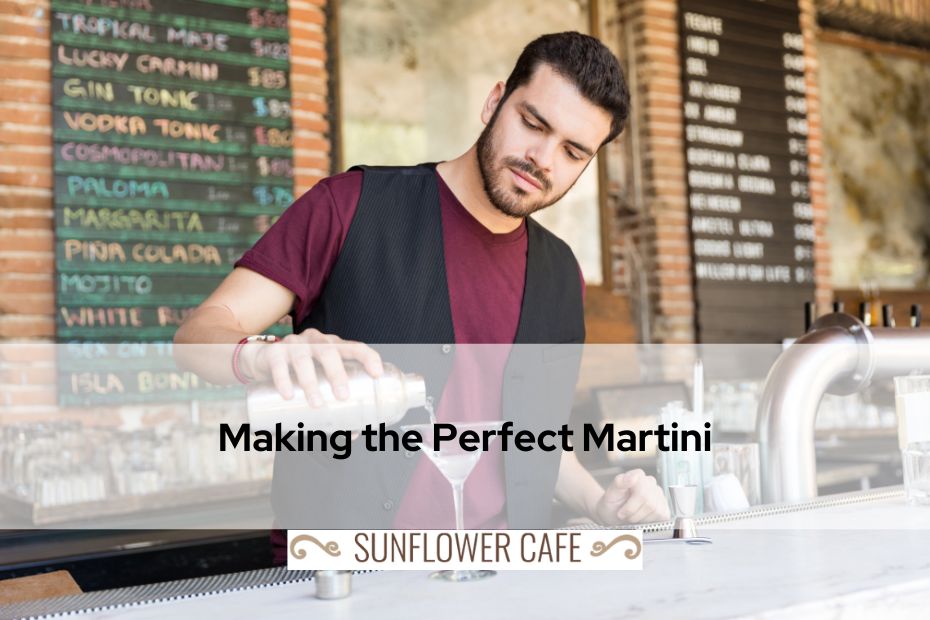The Martini is arguably the most well-known and enduring of all beverages. It’s also a case where opinions vary widely on the optimal approach to production. Whiskey or vodka? Shaken or stirred? Shards of ice or double-strained water? The olives or the lemon twist? Stuffed with blue cheese? Dirty?
Your preferred Martini preparation method will likely vary from that of your aunt. Despite this, you and your aunt may agree that making a stellar Martini in your kitchen can make you feel as refined as anybody else.
With so many variations possible (espresso martinis, anyone? ), it’s best, to begin with the standard recipe for a Martini before experimenting with your own. Before we start the recipe, let’s examine why such a simple, classy drink like the Manhattan has so many individuals on opposite sides of the debate.
Which spirit is better, gin or vodka?
Gin is essential to a traditional Martini. Gin is like a pine cone to some and a delicious treat to others. Most of the botanical tastes in gin center around juniper berries. It’s like that one person who always looks good in a bright, funky-colored outfit, no matter how you feel about it. The second essential component of a traditional Martini is dry vermouth, and gin works because of how effectively it complements dry vermouth’s botanical properties. I suggest a premium gin if you decide to go that way. Beefeater, Plymouth Gin, Tanqueray, and Hendrick’s are just a few that come to mind.
We have vodka over here in the opposing camp. It’s a neutral spirit with a bad rap for being tasteless among cocktail connoisseurs. Still, it’s mellow, and some drinkers prefer it over gin. Those who appreciate vodka should treat themselves to a high-quality brand like Belvedere or Ketel One. In this case, every drop of components counts. You can get a good bottle for between $25 and $35.
So, who exactly is this Dry Vermouth guy?
Dry vermouth is Martini’s second component. Fortified wine is made by combining and infusing various herbs and botanicals. Use vermouth from a high-quality, well-preserved bottle. When I say “well-preserved,” I mean chilled once opened. Remember, it’s still wine and will oxidize once opened, so store it in the fridge. Vermouth that has turned to vinegar from being left out is the worst. Bad taste. Noilly Prat and Dolin are two excellent examples of dry vermouth that you should try.
Shaken or Stirred? (Here’s Looking at You, 007)
As a general guideline, if the only ingredient in your cocktail is alcohol, you should stir it. The Martini should be swirled if you follow this regulation. I doubt James Bond would agree. On a normal day, I wouldn’t dare go to battle with him, but in this case, I strongly suggest you stir your Martini, especially if you’re using gin. Shaking might “bruise” the gin, which dilutes the flavor of the botanicals you’re looking for.
In the Mood for a Chilled Martini?
Some folks don’t think a martini becomes cold enough if you stir it, so they shake it instead. Shake your drink if you like the ice cubes floating on top and the temperature dropping to subzero levels.
The olives or the lemon twist?
Always serve martinis in cold glasses, but be creative with the toppings. To infuse your Martini with citrusy flavor, wipe the back of a lemon peel over the glass’s rim before pouring. This adds a new dimension to the scent. Put the lemon peel in the drink, or take it out and replace it with fresh olives.
And now that you’re so sophisticated, remember to sip your Martini with your pinky out.
INGREDIENTS
- Two and a half ounces of vodka or gin
- Dry vermouth, half an ounce
- Ice
- A garnish of olives or a twist of lemon peel.
EQUIPMENT
- Glass or shaker for mixing
- Strainer with a Hawthorne
- Strainer (with fine mesh) for martinis shaken with a shaker.
- Spoon bar
- Measurement tool for liquids; jigger
- Stemware: Martini or coupe
- Knife for pairing or a Y-Peeler
INSTRUCTIONS
- Put your Martini glass in the freezer for a few minutes before assembling your drink.
- Mix your own: Combine the gin, vodka, and dry vermouth in a cocktail shaker.
- To cool the Martini, add ice cubes and whisk for 30 seconds before straining. Pour the mixture through the strainer into the Martini glass.
- Dress the glass: Prepare a martini by peeling a lemon and pressing the cut into the drink. After rubbing the rim with the peel, drop the lemon peel into the glass. Olives on skewers are another option.
SHAKEN
- Put your Martini glass in the freezer for a few minutes before assembling your drink.
- To make the drink, fill a cocktail shaker with ice and add the gin, vodka, and dry vermouth.
- Stir in cubed ice and shake for a full 10 seconds.
- If you want chunks of ice floating on top of your Martini, pour the mixture into a cold Martini glass. Strain the drink through a fine-mesh strainer to remove the ice chunks if you prefer.
- Dress the glass: Prepare a Martini by paring a lemon and pressing the peel’s back into the drink. After rubbing the rim with the peel, drop the lemon peel into the glass. Olives on skewers are another option.
| Homepage | Click Here |
| Drinks | Click Here |
